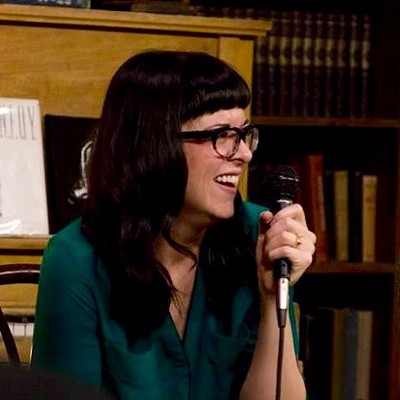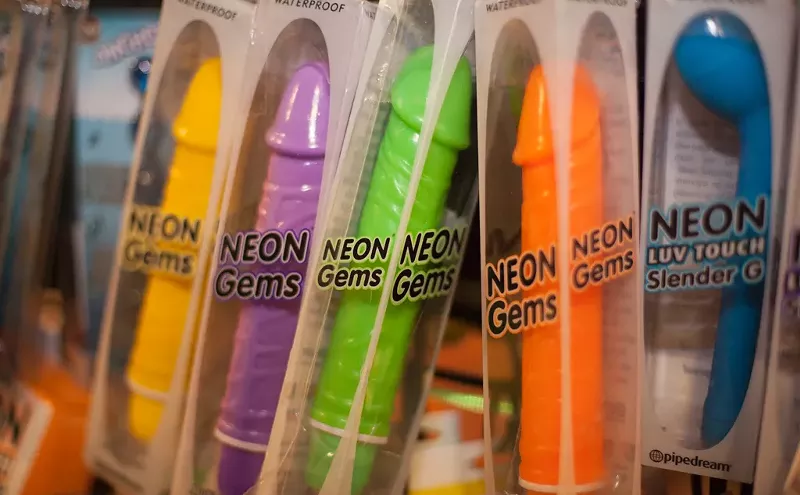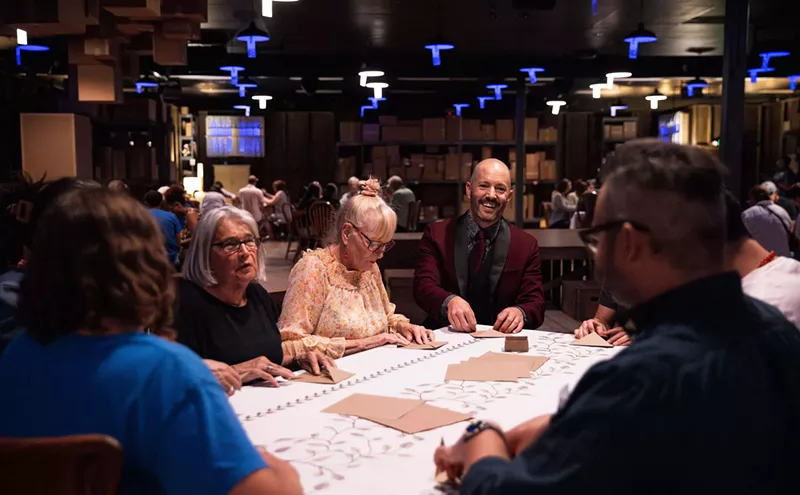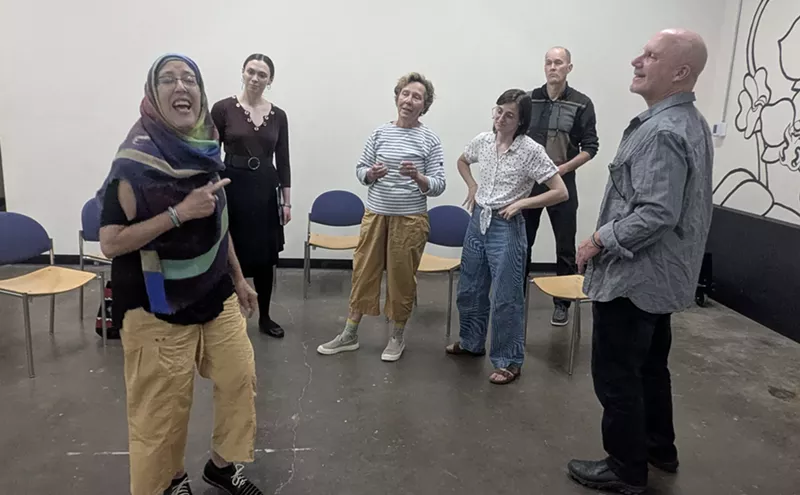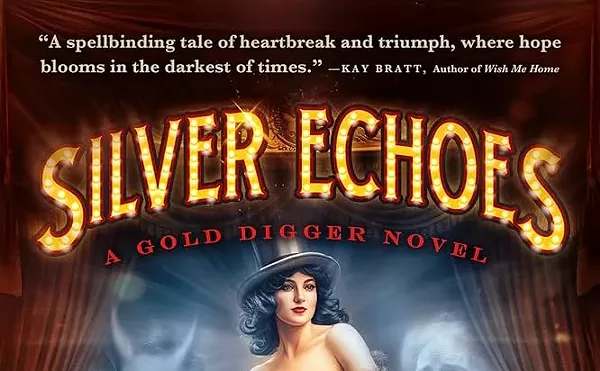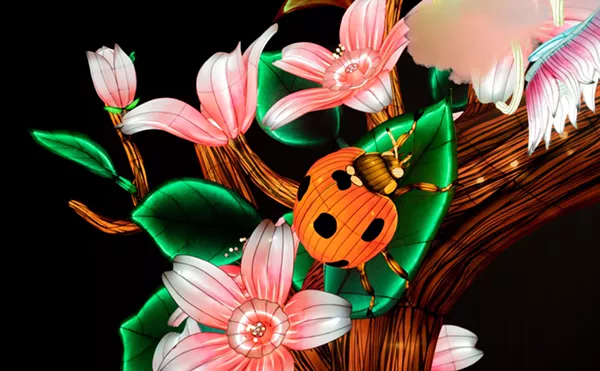This Saturday, November 23, Lerner will host From Russia With Drinks, a celebration and conversation about his new book at the MCA Denver. In advance of that get-together, Westword spoke with Lerner about this strange tale and why he gambled on 181 paintings bought by collectors in an eBay auction.
See also: Now Showing: Adam Lerner and Adam Gildar
Westword: Why did you decide to do this exhibition in the first place?Adam Lerner: It's hard for somebody who's not in the museum field to understand just how unusual it is to produce an exhibition and not know anything about where the objects that you're exhibiting came from. To not know if they were fakes, student works or works by the masters. I have to admit that it was frightening for me to go against all of the conventions of my field -- but I felt like there was something that was very powerful about a body of work that was so good, but also completely mysterious.
I overcame all of these fears of basically violating the rules of my field and decided to produce an exhibition because first, I loved the works. And second, I think the works say something profound about what it is we value when we value art.
You bring it up in the preface of the book, but there is so much authentication in our daily lives. And with art, I mean, art can mean a lot of things -- but one of those things is that we don't know. We don't know the origin of a piece, and maybe we just like looking at it.
Sometimes there is a tendency for museums to care so much about art, they forget about, like, why art even matters. I think that art matters because we want something that feels powerful and mysterious. It comes from some place that is beyond -- something that feels completely different from everything else in our lives. That's what these objects had.
I wouldn't assume that this kind of situation happens often, where work crosses your path that isn't authenticated, but what was it about these paintings that made you take the chance? Was it because there was so much of it? Or because you just really liked this period and style? Or?
What I try to address in the book is that, well, all of the above. First of all, the works are freaking awesome. Second, that period in art -- the Russian Avant Garde -- is just so exciting. If you asked me what my ideal dinner party is, it's where I get to sit around a table with a bunch of people who love Russian Avant Garde and we can just talk all night about how much we love it. There is something about that period that is really exciting to me.
It is also a very mysterious period, because all of these artists died young and there's not that many works of theirs that exist or are easy to see. The work was great and it had the energy of revolution -- and some of that feels rare and precious at the same time. Even, at times, spiritual.
The works are great, the time period is amazing. Then there's something that I try to tell in the story about them: Everybody -- and to some extent, including me in this book -- is a little bit crazy. The people who have collected 181 unauthenticated paintings are clearly crazy. The people who sold it to them -- if you could just see them, they are completely quirky individuals who are mid-level insurance administrators who love to tell these crazy stories and create almost like fairytale narratives. All of the art dealers who sell this stuff, they themselves have a little bit of eccentricity to them and they are always fighting with each other. The artists who made the stuff are fighting with each other. And me. I'm kind of crazy for doing this exhibition.
What I'm trying to say is, on some level, all of us are in this big, crazy enterprise together -- and there is something beautiful about that. This sounds like the perfect storm of participants. Did they come to you with these paintings? Did you find them?
They came to me. A friend of one of the collectors called me and told me about this body of work and I said, okay, let me see it. I would say that probably, I think you're right. I think most people that are curators of contemporary art or are museum professionals may not entertain that meeting. Part of what interested me was that I always like the quirkiness of art; I like the margins of art. those are the things that touch upon what is most meaningful and what is most human.
Was there a point at which you thought, I'm going to show these works whether I find out if they're real or not? Or did you just know right away when you saw the paintings that you wanted to do something with them?
I knew right away that I was intrigued, but I have to admit that I was foot-dragging -- because I was a little bit afraid. Because curators judge themselves as professionals based upon their ability to make judgments of authenticity, based on their ability to say what is real and what is not. Therefore, I was a little bit afraid that I was going to completely disqualify myself from ever being invited to a museum professionals event or conference again if I did something like this.
I wanted to do it, but I was afraid and then I finally agreed to do it and I was at The Lab at Belmar when I decided to do it. But then I became the director of the Museum of Contemporary Art (in Denver) and all of a sudden the stakes were so much higher. (Laughs.) So it was really... it did not get any easier for me. That might seem hard for somebody who's not in the museum field how to understand, but in retrospect it makes sense.
One thing I knew was that these works had gotten under my skin. I was thinking about them a lot and I was thinking about this exhibition a lot. I was really captivated by the art, by the story. And I think that I knew that I wanted to do something -- I just wasn't sure what.
I first saw these works in 2007. By 2008, I had agreed to do the exhibition of the paintings. In 2009, I became the director of the Museum of Contemporary Art and all of a sudden things changed and I had to go back and find the courage and decide I was going to do the exhibition now that I was at the MCA.
Why did you decide to share this experience in a book?
You know, I guess the answer to that question is enough people asked me to. Really, it was two artists who were visiting from New York who saw the exhibition, and told a friend of theirs at Princeton Architectural Press about it. Princeton Architectural Press contacted me about writing a book and I said I'm not really interested. (Laughs.) I did the exhibition, and it was interesting and fun. I was working on this other book and I asked them if they would be interested in that -- they said, "Why don't you just submit a proposal." It turns out that a lot of people really thought that they really wanted to hear the story. There were ways that I could have told the story as an exhibition, but as a book, it was way more comprehensive.
In the end, did you discover that the work with authentic? Or does that give away too much of the book...
There's no spoiler. (Laughs.) The whole point of the book is that I wanted to leave it a mystery and in fact, I never made a serious quest to discover the origins of these works. I was interested in the quest by the collectors and their obsession with it. But I decided that for me it really wasn't about trying to find out whether these words were real or if they were fake. I actually wanted to keep alive that sense of mystery. What happens if we discovered that these objects were student works? All of a sudden they would have a market value, we would understand their place in history, the market value would not be as good as the Masters, but it would be something that would be higher than it is if they were just fakes. All of a sudden they would become objects just like any other objects. But if you leave it a mystery, it becomes something special.
I struggle with this a lot -- there's a difference between these paintings and seeing a really beautiful flower, let's say. You don't know what kind of flower it is, but it is just this beautiful thing that you're looking at. There is something even more powerful when your mind kicks in, in relationship to your heart. And your mind says to you, wait. I shouldn't like these because they might be fake. So you fight with that, and all of these other voices are saying, these real to me but they can't be real. They were bought for $200, how could they be real?
When you fight in that way, it actually feels different from the simple unknown. This is more of the radically unknown, in a way.
Adam Lerner hosts the release of From Russia With Doubt from 5 to 8 p.m. Saturday, November 23, at MCA Denver. For more information, visit Lerner's website.
Follow @WestwordCulture


